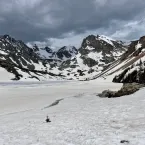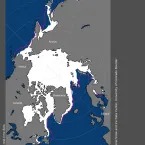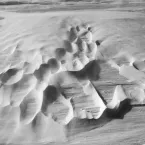Our Research
As climate changes, how do Earth's frozen areas affect our planet and impact society?
In this section
Related News & Stories
Filter by:

Spotlight
NSIDC expertise has contributed to the enhancement of Xarray, a popular open-source tool used for data analysis and visualization. DataTree has been integrated into Xarray.

News Release
Antarctic sea ice has likely reached its minimum extent for the year, at 1.98 million square kilometers (764,000 million square miles) on March 1, 2025, according to scientists at the National Snow and Ice Data Center (NSIDC) at the University of Colorado Boulder. The 2025 minimum is effectively tied with 2022 and 2024 for second lowest in the 47-year satellite record. It is 190,000 square kilometers (73,000 square miles) above the record low, set in 2023. The last four minimums have been the lowest on record.

Analysis - Sea Ice Today
On March 1, Antarctic sea ice likely reached its minimum extent of 1.98 million square kilometers (764,000 square miles), tying for second lowest extent with 2022 and 2024 in the 47-year satellite record. This is the fourth consecutive year that Antarctic sea ice has reached a minimum below 2.0 million square kilometers (772,000 square miles).

Analysis - Snow Today
Snow-covered area in February across the western United States was 13 percent below average, at 822,000 square kilometers (317,000 square miles) of snow cover, ranking sixteenth highest in the 25-year satellite record (Table 1). Snow-covered area for February was about half of the area of the record high year, 2023, and 264,000 square kilometers (102,000 square miles) more than February 2003, the lowest year on record.

Analysis - Sea Ice Today
Arctic sea ice growth was slow in February, leaving extent at record-low levels for the end of the month. In the Antarctic, the annual minimum in extent is imminent, and near a record low.

Spotlight
A new study focuses on improving global temperature data sets in light of uneven warming across the globe. To fill gaps in historical climate records, the study relies in part on sea ice data from the National Oceanic and Atmospheric Administration program at the National Snow and Ice Data Center (NOAA@NSIDC).